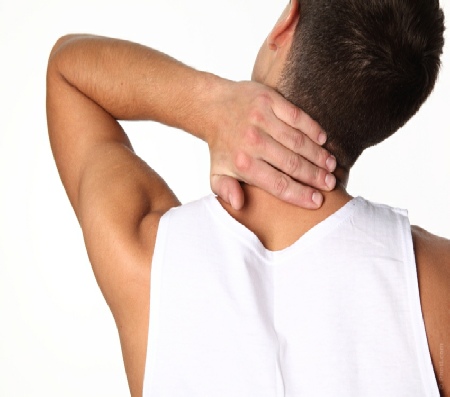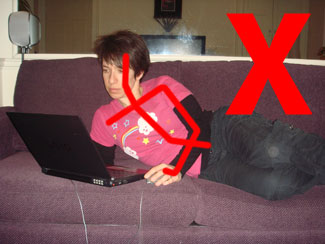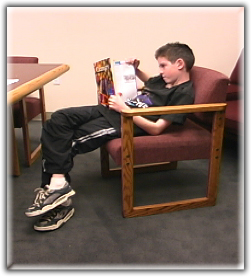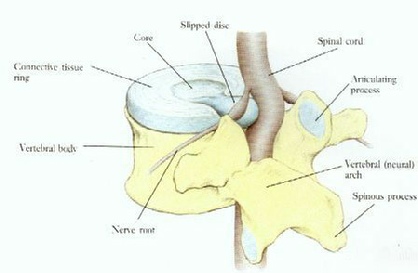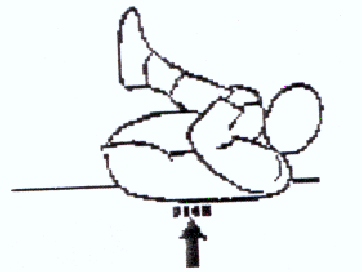
© Ennis Physiotherapy Clinic, 3A Barrack Close, Barrack Street, Ennis, Co. Clare V95 X437 Tel: (065) 6840757
Spinal Problems Neck + Back Pain Disc Injury Whiplash Posture
Lower Limb Injuries Walking + Running Ligament Injury Snowsports Injury Home Exs Prog
Upper Limb Injuries Ligament Sprains Tendon+Muscle Golf + Bike Set Up Useful Links

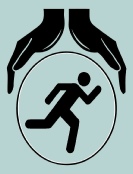


065 6840757

Mon - Fri 9.30am - 8.30pm


3a Barrack Close, Barrack St., Ennis, Co. Clare V95 X437
Injury to the Intervertebral discs is a well known risk factor for developing pain of spinal origin. Unfortunately there are many misperceptions, misrepresentations and generally a poor understanding of how and why the discs are so commonly involved in spinal pain. A whole range of terminology has entered normal usage which facilitates and perpetuates this poor understanding.
Like all tissues the disc is prone to injury in a number of ways. The pain associated with disc injury is rarely arising from the disc itself but more often from other tissues affected indirectly by the injury to the disc. The disc is formed by laminated layers of cartilage which form the wall or Annulus of the disc which encloses a gel like liquid called the Nucleus. The nucleus attracts water very strongly and draws fluid into the disc when weight is not on the disc while we lie down - increasing the pressure the disc by morning time. The wall of the disc is attached to the body of the vertebra bone above and below it and completely enclosed on all sides by the strong spinal ligaments. Therefore the disc itself is not free to move as such i.e. it does not “ go in or out” as such.
The laminations of the disc wall allow the bones of the spine to bend and rotate a little bit relative to each other - the shape of the bones and the ligaments also keep this movement relatively limited at individual segments. Overall movement is produced by a little movement occurring at a number of segments at the same time. The disc get progressively larger as one proceeds downwards through the spine and so the lumber discs are the biggest.
As water is drawn into the disc (when lying down non-weightbearing) it carries in nutrients for the tissue and as it is pushed out (when up and about weightbearing) it carries away waste product with it. Over many years there is a gradual loss of fluid from the disc nucleus and it gradually solidifies after between 50 and 60 years.This is normal age related degeneration of the disc.
There is minimal blood supply and nerve supply to the discs and so they are slow to heal and healthy discs do not generally experience any pain.
With movement over years the laminations within the wall of the disc may
become separated and weakened and begin to crack. As the spine is
pressurized or loaded when we adopt poor postures or lift poorly the fluid
in the nucleus is forced into the cracks and very gradually over a long period
can deepen and widen the cracks. The disc wall gradually weakens and
may begin to bulge - similar to the way the side wall of a tyre may ‘blister’
when weakened.
Such a disc is very vulnerable and prone to further serious injury. Further,
especially sudden, pressure on the disc (by rapid bending movements, falls,
jerking, coughing etc) can cause the last lamination of the wall to fail and
the disc effectively ‘bursts’ or cracks open and the nucleus material is free
to ooze to the outside of the disc. This is commonly referred to as a
‘slipped disc’, ‘putting the disc out’, ‘bursting the disc’ and
medically terminology is called a Prolapsed disc.
As the nuclear material reaches the outside of the disc it attracts + absorbs
water strongly causing to expand rapidly in size. If there is not much space available this can put pressure on the surrounding tissues which may be pain sensitive. Unfortunately in humans the weakest part of the disc wall is to the rear and to the corner on either side which is very close to where the spinal nerve root is exiting from the spine. Pressure on this nerve is likely to provoke pain and other symptoms.
A disc that has repeatedly been injured or has been chronically problematic over years is likely to appear thinner on x-ray. An appearance that led to a description of ‘a worn disc’. This type of disc does not maintain the normal separation between the vertebral bones and hence the joints of the spine at that level are likely to wear or degenerate / become arthritic more quickly than would otherwise be the case.
Treatment
Treatment attempts to minimise the impact of the injured discs on other surrounding tissues and to minimise further damage to the disc itself. Management of the pain, if any, and the loss of normal movement patterns in the spine are the key goals and a combination of treatment modalities are utilised to achieve this.
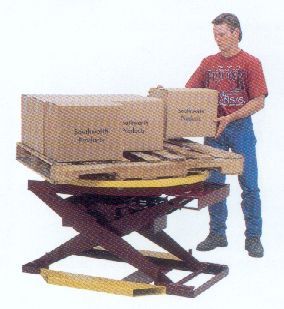 Rest and avoiding provocative things that aggravate the pain is recommended in the first week or so.
Rest and avoiding provocative things that aggravate the pain is recommended in the first week or so.
Medication and heat / cold packs are recommended for management of pain symptoms.
Avoid sitting down if possible or keep it to a minimum - sitting is one of the things that pressurises the discs most
Maintain good postures whether sitting or standing. Avoid prolonged periods in any one posture. See here for more information on posture.
Avoided prolonged periods in bedrest beyond the first day or two if possible.
Begin home exercises at earliest possible opportunity - don’t wait for pain to get really bad!!
Remain as active as possible - it is by doing things that your back will become strong again
Be proactive in preventing and protecting your discs against further damage and injury.
Consider ergonomic advice when selecting furniture, cars, work postures, planning work and leisure activities.
Strengthen your spine when the disc injury is resolved and gain maximum ‘control’ over core stability and good quality movement patterns. Pilates and yoga type exercises programmes can assist but all exercise needs to be suitable for the individual circumstances - no one approach suits everyone.
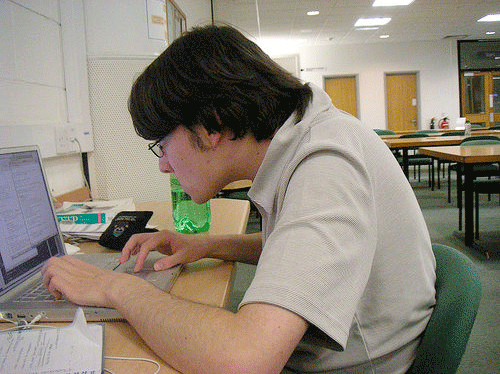 Exercise programmes need to be developed and practiced which combine appropriate amounts of flexibility and strength training and include functional activities appropriate for the persons needs.
Exercise programmes need to be developed and practiced which combine appropriate amounts of flexibility and strength training and include functional activities appropriate for the persons needs.
A good attitude to protecting your discs is required - it is not what you do so much as how you do it! An injured disc can recover and can become strong again but it cannot become ‘uninjured again. Your spine must become ‘fit’ for what it needs to be able to do each day and it must be protected and cared for - but not to the point where it becomes unused or under-used.
The exercise above is an example of how the spine can be exercised into flexed postures which are relatively safe for the disc. Because the person is lying down there is relatively low pressure within the disc to begin with and the flexion will raise it but not excessively while allowing the joints to the rear of the spinal column to be stretched. Other exercises that are possible while lying down are those that involve some rotation of the trunk and also those done in prone lying on the tummy such as extending the lumber area by lifting the head and shoulders with the arms - thus arching the back.
The best exercise programmes will include a variety of physical activities which include some stretching , some strengthening and some functional exercises. This latter type of exercise will be somewhat like or reproduce the movements and actions likely to be encountered in one’s daily work , sport or leisure pursuits. The may be incorporated into activities such as walking or running . Core stability and other exercise types such as pilates and yoga may fall into this category.
Postural strain is a common factor and cause of spinal discomfort for many people. ‘Normal’ posture is develops during childhood and young children generally have good postural habits. Poor postural habits can occur at any time but generally become habitual during or after teenage years. The selection of age appropriate and height / size appropriate furniture and equipment for work or leisure is crucial for encouraging good posture . However even the best ergonomically designed furniture and equipment can be used badly and therefore is not a guarantee of good posture. An example of this is seating - even with an appropriate chair which provides adequate support in the right places a person may sit poorly.
If the seat is too low (hips below the knee level) or the seat is too deep (thigh is too short and can’t meet the backrest) the pelvis will roll backwards into posterior tilted posture and the spine must flex which places pressure on the discs and on the posterior spinal ligaments/joint capsules. Raising the seat level / providing additional support directly behind the spine may alleviate this type of problem.
Good posture can be achieved when the eyes are held level and facing forward, the shoulders are level, the pelvis is held in neutral and where there is relative muscle balance around the pelvis and shoulder girdle areas.
For more detailed information relating to posture please see the posture information page.
1. Maintain good posture and alignment of the head and neck. Avoid excessive flexed or slouched positions. Stand or sit tall with the shoulder relaxed, the upper front of the chest raised, the head in line with the body so the ears are directly over the shoulders. The neck should f eel long relaxed and straight.
2. Avoid Prolonged Sitting
3. Sit with good spinal and especially lumber support
4. Ensure computer workstations are correctly set up
5. Tilt reading material up towards you.
6. Consider using a headset / hands free set up if you spend long periods on the phone each day.
7. Do not cup a phone between your ear and your shoulder
8. Do not slouch while driving – position the seat to support you correctly.
9. Sleeping
a. Avoid sleeping on your stomach
b. Sleep on the back in preference to on the side if possible
c. Support the neck only with sufficient pillows to maintain good alignment of the head and neck relative to the rest of the body – do not have it sagging to side, twisted or excessively bent forward.
d. One pillow is usually sufficient if lying on the back and two if on the side. Pillows should not be under the shoulder - only under the head and neck.
10. Avoid prolonged static postures – take regular breaks (as when driving or reading/writing at a desk)
11. Avoid excessive amounts of looking or reaching upwards while doing everyday jobs as it can cause shoulder and neck pain – instead use a steps / ladder to raise yourself so there is not a need to look upward or to have the arm above shoulder height.
12. Carrying loads such as a bag or small rucksack on one shoulder can aggravate neck pain by putting excessive strain on it. Spread the pressure more evenly by putting both straps on the shoulders and or by supporting the load from underneath
Consult Ennis Physiotherapy Clinic if you need an assessment, treatment or advice about your neck pain, especially if it does not settle within a few days or it is interfering with your ability to work.
Most people suffer some sort of neck pain or ache during their life. It may not be possible to identify the exact cause of all neck pain. Normal ‘age related’ wear and tear and poor posture is often observed. It is usually variable but not very severe.
If you have
- Severe pain in the neck
- Pain in the shoulder and/or shoulder blade area or
- Pain down into the arm(s)
then you need assessment and treatment by a chartered physiotherapist.
Remaining as active as possible and physiotherapy treatment can accelerate your rehabilitation + recovery.
‘Whiplash’ injuries occur where a sudden movement of the head and neck, sprain the soft tissues of the neck and shoulders. This can result in pain, stiffness and reduced movement / activity. There may be a variety of other signs and symptoms in the head, neck, shoulders and arms. The duration of neck pain is very variable but 4-6 weeks, or more, is not unusual.
Headache can be caused by sprain / strains of the upper neck area. This type of headache has been shown to respond well to manual therapy and exercise treatment provided by Chartered Physiotherapists.
Contact the clinic if you would like have an assessment and/or treatment of your neck, head, shoulder or arm pain.
Non Specific Low Back Pain (LBP)
Back pain isn’t usually a sign of a serious medical condition – it’s much more likely that a muscle is strained or a ligament sprained - and often there is no particular cause..
Back pain is sometimes linked with pain in one or both legs, which is called sciatica. Other symptoms can include numbness and tingling in the legs and feet. These are due to an irritation of the nerve roots in the back.
If you notice weakness of the muscles in your leg, or if you lose bladder or bowel control, you should see your doctor urgently.
If your back pain persists the lack of movement can cause the muscles to weaken and the joints stiffen. It’s important that you don’t rest for too long and keep moving.
If your back pain affects your activity and is persisting, you should seek the assistance of chartered physiotherapist.
A physiotherapist can provide a variety of treatments such as
- Manipulation,
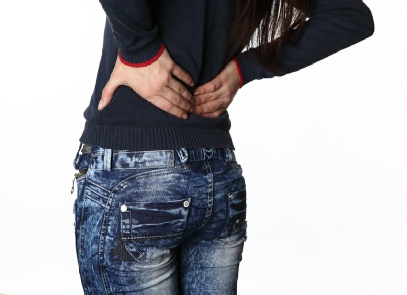
- Massage,
- Electrotherapy,
- Functional Rehabilitation exercises,
- Advice on
- The cause of your problem
- Return to your normal activities
- Prevention of pain returning in the future.
Exercise is the most important way that you can:
- • ease stiffness and pain
- • build up muscle strength and stamina
- • improve your flexibility and general fitness.
These benefits continue for some weeks after the pain and symptoms subside so it is advisable to persist with the exercises for a period after the pain has gone.
Consult Ennis Physiotherapy Clinic if you need an assessment, treatment or advice about your back pain especially if it has not settled within a few days
